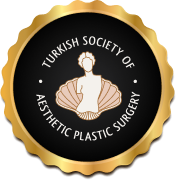Although aesthetic breast reduction surgery seems to be one of the cosmetic surgeries performed to correct a woman's appearance, it is actually a reconstructive surgery, not aesthetic. A sagging breast due to large size can cause back and neck pain in women and may lead to hunchback. There may be numbness due to the bra pressing on the arm nerves. There may be difficulty in breathing. As a result of the skin of the breast and the skin of the breast constantly rubbing against each other, rashes and sores may appear in the under-breast groove. Daily physical activity may be limited. In addition, while large breasts create difficulties in choosing clothes, the woman's self-dislike causes social and psychological problems.
An operation for breast reduction gives the breasts a natural appearance, the problems listed above are eliminated, and the person's life becomes easier. Breasts can be large for different reasons. Genetic factors, hormonal changes or certain diseases can cause large breasts that do not fit the body size. Weight changes, breastfeeding and gravity can exacerbate the existing problem. Increased breast tissue and a large breast can also be seen in young girls.
Preoperative
If you are considering breast reduction surgery or want to exchange information on this subject, you should consult a plastic surgeon. In the first examination, you should clearly explain your expectations, in short, why you are considering such an operation and what you expect from this surgery. Your surgeon will first listen to you, learn your personal and family medical history, and then examine you. As a result of this examination, the size and shape of your breasts, the condition of your skin, your age, whether you will get married and have children, the new location of the nipple, etc. will be discussed with you. Do not hesitate to ask your surgeon again and again if you do not understand. Your surgeon will give you information about the details of the surgery, scarring, nipple sensitivity, breastfeeding, anesthesia and the risks of the surgery. Seeing pictures of patients who have had surgery before can help you make your decision easier.
Preparation for surgery
In addition to preoperative blood and lung films, mammography and, if necessary, breast ultrasonography should be performed. Conditions such as high blood pressure, smoking, drug habits and diabetes should be discussed. Blood transfusion is usually not required for breast reduction surgery. In cases where blood transfusion is necessary, your own blood (autotransfusion) taken 5-7 days before surgery can be used. You will need someone to help you on the day of surgery and for the next few days. Breast reduction surgery is an operation that needs to be performed in a hospital, you may need to stay in the hospital for 1-3 days.
Surgery
In aesthetic breast reduction surgery, the large breast tissue is reshaped according to the body size of the person. Excess breast tissue and the skin on it are removed. The nipple is moved to where it should be. The operation is performed under general anesthesia in an operating room under hospital conditions. The operation takes 2.5 - 4 hours. No matter which method is applied, there will definitely be a scar around the nipple. In addition, depending on the method applied, an inverted T-shaped scar is left downward from the center of the lower edge of the nipple. The lower part of the T-shaped scar is adapted to the inframammary fold. However, the surgical technique applied recently has eliminated the scar in the breast fold area. Only a 4.5-5 cm scar remains around the nipple and downward from the middle part of the lower edge of the nipple. However, these scars are prominent at the beginning and may become indistinct over time. The degree of scarring after surgery depends on the size of the breast, the surgical method used and finally the scarring properties of the patient's skin. A group of patients state that they sunbathe topless. In some special cases, in extremely large breasts, it may not be possible to perform the types of surgery listed above. In this case, techniques in which the nipple is carried freely are used, and the scars of this surgery are inverted T-shaped like the above surgeries.
After surgery
Postoperative period is usually comfortable. Pain is minimal. Arm movements may be limited. A bra-like dressing is applied over the breasts or some surgeons put on a bra immediately after surgery. Pipes called drains are usually placed in both breasts and removed within 24-72 hours. A separate dressing is placed on the nipple. The dressing is opened after 2 days and the wound is checked. After 7 days, the dressings are opened. Sutures are removed after 7-10 days. The patient stays in the hospital for 1-3 days. The patient wears a sports bra for 6 weeks and massage is recommended. There may be swelling in the early period, numbness in the nipple and purplish discoloration on the skin. These disappear spontaneously in a short time.
Return to normal life
The patient can return to work after 1 week. It is recommended to stay away from heavy sports for 3 months. Aesthetic breast reduction surgery is an operation that gives good and permanent results in general, improves the mental health of the person and his/her partner, makes them more connected to life, and especially facilitates the woman's clothing style. The newly shaped breast is durable for a long time, but weight changes, pregnancy, breastfeeding and gravity can cause volume increase and sagging in the breast.
Risks of breast reduction surgery:
As with any surgery, breast reduction surgery has some risks. Although most people who have this surgery do not have any problems related to the surgery, it is important that you know about them. It is important that you know the risks and benefits of the surgery for your personal choice. When your doctor tells you about these risks, you should discuss them one by one. Bleeding: It is rare and may occur during surgery or in the postoperative period. After the surgery, a drain is placed in the breasts to monitor for bleeding and to prevent a small amount of blood from collecting in the breast tissue. Do not take aspirin or similar medications from 10 days before the surgery, as these medications may increase the bleeding tendency. Infection: This is an extremely unusual situation. Most surgeons use prophylactic antibiotics right at the beginning of surgery. Changes in nipple and skin sensitivity: Temporary decrease in sensitivity of these areas may occur. Scars: Every surgical procedure heals with scars, often the nature of the scars cannot be predetermined. In some cases, scars may be unnoticeable, while in some patients scarring may occur in the skin and deep tissues, and some patients may even require surgical correction or other treatments. Dissatisfaction with the result: You may not be satisfied with the size and shape of your breast.
Your neck, back and shoulder pain may persist after the operation. In rare cases, scarring of the skin and deep tissues of the breast may cause pain. Hardness in the breast: Hardness due to scarring or fat necrosis in the breast can be seen rarely. This is an unpredictable condition. Delayed wound healing: It can be seen rarely. Some areas of the breast skin or nipple may take more time to heal completely. Frequent dressing may be required. Wound healing problems are more common in smokers. Asymmetry: Most women naturally have breast asymmetry. There may be differences in the shape, size and symmetry of the breast and nipple. Breast diseases: Breast disease or breast cancer can occur at any time in a person's life, regardless of the breast reduction surgery. The person should have regular breast check-ups with or without surgery. Breastfeeding: Some women who have had breast reduction surgery are able to breastfeed their children, but this can often be difficult to determine in advance. If you want to have children and breastfeed, you should discuss this with your surgeon before having breast reduction surgery. Allergic reactions: Although rare, local allergies to the plaster, suture materials or pomades used have been known to develop. There is a very small possibility of this happening. Pain: Breast reduction surgery Need for additional surgery: There are many factors that affect the long-term results of breast reduction surgery. If conditions such as laxity and sagging of the breasts occur, additional surgery may be required.

 +905327672235
+905327672235 EN
EN DE
DE TR
TR





